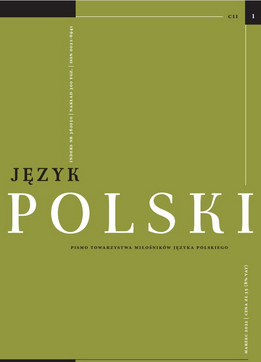Rodzaj męskożywotny a typ paradygmatu. O tendencjach rozwojowych we współczesnej deklinacji polskiej (na przykładzie anglicyzmów)
The masculine animate gender and the type of inflectional paradigm. On the development tendencies in the noun declension in contemporary Polish (the case of Anglicisms)
Author(s): Iwona KosekSubject(s): Comparative Linguistics, Western Slavic Languages
Published by: Towarzystwo Miłośników Języka Polskiego
Keywords: grammatical gender; noun inflection; masculine animate nouns paradigm; Genitive sg.; syncretism Genitive – Accusative sg;
Summary/Abstract: The selected issues of the Polish inflectional system relevant to the so-called masculine animate gender (M2) are discussed. The material for the analysis includes English loanwords connected with the Internet or modern technology. The article owes its inspiration to both observations of the linguistic behavior of contemporary Poles as well as literature. It is pointed out that, in the analyzed material, the genitive singular ending is unstable (with two variants: -a and -u), the -a ending is expansive, and two kinds of accusative syncretism coexist (one with nominative and another with genitive). The processes may contribute to a considerable language system change – a new inflectional paradigm for masculine animate nouns with different forms of nominative, genitive, and accusative may develop. However, as the discussed material indicates, this kind of development seems rather unlikely in the nearest future. The bifurcation of the accusative in two different cases is also dubious. Nevertheless, the tendency to assign the masculine animate gender (M2) to inanimate masculine nouns is not only stable but also increasing.
Journal: Język Polski
- Issue Year: 2022
- Issue No: 1
- Page Range: 57-69
- Page Count: 13
- Language: Polish

